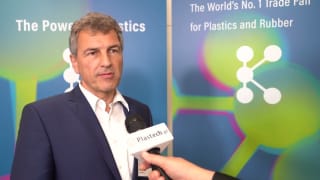Tie-bar-less and all-electric – now with up to 1200 kN clamping force
With a clamping force of 1200 kN, the new e-motion 120 TL is the largest machine in its series. This upward expansion represents Engel's focus on the trend towards an increased use of multi-cavity moulds. Without any tie-bars in the way, the mould mounting platens can be utilised fully, so that large and bulky moulds can be fitted on comparatively small injection moulding machines. This is also an advantage in the manufacturing of geometrically complex components that require core-pulls and sliders within the mould. Rather than the mould dimensions, now the actually required clamping force determines the size of the machine. This saves costs in new investment as well as current operations.To ensure a long useful life of the mould and a consistently high product quality, the all-electric and tie-bar-less high performance machines by Engel are equipped with a highly sensitive platen parallelism adjustment. Machines from this series are often used in the production of extremely small precision parts in the electronics and medical technology industries.
One process for infinite design options: Design, structure, function in just one process step
With the evolution of its foilmelt technology, at the Fakuma Engel presents a roll-to-roll IMD application with a flexibility that has not existed until now. The joint development of the system partners Engel, Leonhard Kurz (Fürth, Germany), Schöfer (Schwertberg, Austria) und Isosport Verbundbauteile (Eisenstadt, Austria) allows for thermoforming, back-injecting, and punching out in rapid sequence the most diverse surface structures from roll to roll within the mould.The broad spectrum of possible material combinations is remarkable. Foils functionalised using capacitive electronics, multi-layered foil systems with topcoat as well as structured, back-lightable, or open-pore systems such as wood can be processed from the roll. In addition to the typical materials such as ABS, PC or PC/ABS, PP can be used for back-injecting. To change the décor, structure and functionality, only the roll has to be switched, not the mould.
With the production of differently decorated, three-dimensionally complex sample components on a duo 1060/350 injection moulding machine with integrated viper 20 linear robot, at its exhibition booth Engel demonstrates the high flexibility of the series-ready technology. Among others, target groups are the manufacturers of visible parts for car interiors as well as the teletronics and white goods industries.
As of January, 2019, the production cell will be available for technology demonstrations, material tests and customer-specific developments in the new Engel technology centre at its headquarters in Schwertberg.
Modular and highly flexible safety guard
Another innovation presented by the foilmelt production cell at the Fakuma is the new safety guard developed by Engel according to EN ISO 14120, which will be available for all automated injection moulding machines and integrated system solutions as of October. Here again, the focus in development was on high flexibility in combination with a high degree of economic efficiency. The modular concept allows for an especially simple configuration and an equally easy assembly. The comprehensive selection of safety panels and functional elements such as openings, revolving doors and sliding doors allow for the cost-effective realisation even of individual layouts.Source: Engel



